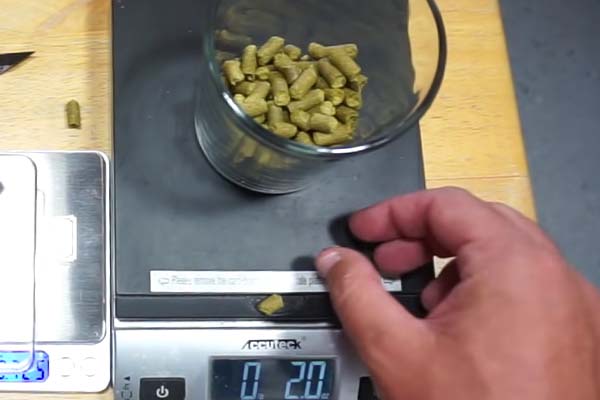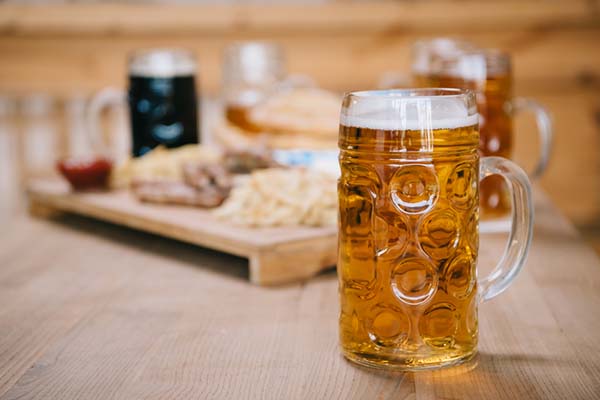Tacos and guacamoles aren’t the only treats that Mexico gave us. On a bright summer day, we also love chilling on the lawn with a crisp and light beer in hand, and that is the awesome Mexican lager.
Love Corona or Modelo?
Then you’d be thrilled to know that they are just the commercial versions. You can actually craft your own tasty Mexican beer.
But aside from being light and crispy, this beer style is still a debatable topic over beer enthusiasts even today, thanks to its complex history and varieties.
But we’ll be covering that too, along with the best Mexican beer recipes that you can try on your own!
So raise your glasses…
Bottoms up!
How is Mexican Lager Related to Vienna Lager?
You might have already come across people or articles calling the Mexican lager a Vienna lager.
Truth to be told, you can thank both the Mexicans and the Australians for this wonder of a brew.
We won’t be talking about Napoleon here or the German emperor…
…but for a bit of a background, the good people of Mexico have been fermenting beverages for over a thousand years ago, long before the conquistadores came.
But what they usually use isn’t malt or wheat.
Guess what?
It’s corn, of course. In Mexico, corn is king. Fight me.
In the 19th century, Austrian and German immigrants came and brought with them their beer culture. Soon enough, their lagers became popular in Mexico but with the modification of using maize instead.
Mexican Lager Style
Appearance
What’s intriguing about the Mexican lager is the fact that there’s actually no clear definition of its “style.”
As a matter of fact…
…even the BA Style Guidelines and the Beer Judge Certification Program (BJCP), which is like the Golden Globes of the beer industry, can’t seem to figure it out, too, as this chill beer is still undefined in their guidelines.
But then we have enough Mexican lagers on the market today to still be able to narrow it down to its varieties’ common denominator.
And it’s a very restrained flavor and style.
This great beer is known to be typically pale, though there are also darker varieties such as amber Mexican beers, as they’re also related to the darker Vienna lagers. But generally, the first thing we’d most probably imagine when we hear Mexican lager is that very pale tropical beer. It’s also very clear, thus the name Clara.
Aside from its color…
…its foam head is also just as light. It’s not too full, but there’s enough to make it satisfying in your mouth. And it also has quite good foam retention too.
Aroma
As you might have already expected, the aroma of a Mexican lager is also subdued and muted. At most, you may catch a sweet corny aroma but it doesn’t apply to all Mexican lagers as its corny quality rarely manifests after the beer is done fermenting.
It may also be light malty and neutrally grainy.
This applies even to the darker variations.
Flavor
If you’re a light beer drinker, you’ll love how the Mexican lager has almost no bitterness in its flavor profile.
It’s the epitome of simplicity.
At the same time, it’s also not overly sweet. You might catch a whiff of sweetness and even a bready and malty taste thanks to either the Mexican lager yeast or the like.
Most Mexican lagers don’t have a caramel undertone too, except for some specially crafted ones. Some also underwent a diacetyl rest.
Typically, a Mexican has very little to no fruity esters at all.
Mouthfeel
Mexican lager is known for its flaked maize adjunct. If there’s anything that can identify a Mexican beer brewing process, it’s the addition of corn.
Though the result isn’t very pronounced…
…it’s what makes this beer’s iconic overall qualities.
For one, the taste is much lighter, as well as the appearance, because the flaked corn tones everything down.
And this is also what happens with the mouthfeel.
The addition of flaked corn dries out the beer more than the typical everyday beer. And because it ferments rather fast, it also adds crispness to the beer, though very subtle.
Overall, it’s very light, clean, and crispy with a nice moderate foam head. There should be no aftertaste as it’s a very neutral beer.
Other home brew recipes you might be interested in:
Equipment Needed
- Brewing kettle
- Mash vessel/tun
- Stirrer
- Immersion chiller
- Fermenting vessels
- Sanitizer
Ingredients Needed
Grains
The base is the Pilsner malt and Two-Row malt most of the time. Both of these malts give off a pale and light color and even a bit of sweetness in the case of Two Row malt.
If you can find one, you can also use German Pilsner malt, which is great if you want your Mexican lager to be sweeter with a bit of playfulness as this malt gives the beer a much sweeter flavor with pleasant notes of honey.
The Vienna malt is usually responsible for a beer’s bready notes.
The Vienna mal
- 3 lbs./1.4 kg. of Pilsner malt (or German Pilsner malt)
- 2 lbs./.91 kg. of Vienna malt
- 2 lbs./.91 kg of Two Row malt
- 2lbs./.91 kg. of flaked maize
- Hops

To be able to maintain its light flavor, hops that are over the top are usually avoided. You’d also want to add it at the boiling’s top to achieve a clean balance. This is not the cookie-cutter standard. .you can adjust according to the result that you want to achieve.
Also…
…you can prepare hops for dry hopping and for the maturation process if you want a different flavor.
- 0.33 oz./9 grams of 1.5 AAU Tettnanger hops for the wort
- 0.76 oz./19 grams of 3 AAU Tettnanger hops at 45 minutes
- 0.5 oz/ 14 grams of Tettnanger hops at 5 minutes
- Dry hopping (optional)
- Yeast
Interestingly, White Labs have yeast that’s made especially for Mexican lager, and it’s the White Labs WLP940.
But you should also know that this yeast tends to give the beer a noticeable amount of diacetyl or a flavor that’s comparable to butterscotch or caramel.
If you love having that infused to your Mexican, then definitely use this yeast. But if you don’t, other alternatives are Wyeast 2278 or Wyeast 1056 as they don’t only give a clean and crisp result but also don’t have any noticeable esters.
- Water
Although it may appear to be a basic component, the type of water you use affects the taste and quality of your beer.
Soft water is required in most beer recipes.
In case you might be wondering…
Mexican lager is known for being pale and light, and that’s because we use only light malts for it (except for the darker varieties). Light malts don’t have as much acidity as dark ones.
That being said, beers need acidity, too.
That’s why alkaline water is out of the question.
Water is a crucial component when you’re making a pale beer. What more if you’re making one of the clearest beers there is, the Mexican lager?
For this, using soft water is the best way to go.
But then, in case you can’t find any near you, you can also treat your hard or tap water with gypsum or calcium chloride. I prefer calcium chloride as gypsum can sometimes add an unwanted flavor to your beer.
Brew Day Instructions
- Water

To get your brew going, the first thing to do is to prepare your water. We’re using 5 gallons of water for this recipe.
If you’ve been brewing beer for a while and can measure and control the pH of your water, you can adjust it to pH 5.5.
To do this…
…while your water is at room temperature, you can add a quarter teaspoon of phosphoric acid at 10% to your water. The ratio is a quarter of a teaspoon for 5 gallons. Then add your calcium chloride or salt.
- Mash

Get your malts along with the corn maize adjunct and mash them in 13 liters of water at about 149 degrees Fahrenheit.
Maintain that temperature for one hour.
After that, stir or recirculate for 15 minutes, raising the temperature to 168 degrees Fahrenheit.
You should be able to get at least 6.5 gallons of wort out of this.
- Hops
Boil the wort for 75 minutes, adding the hops at times indicated in the recipe. The first wort hops get added to the kettle after lautering but before a boil is reached. After the boil is complete, chill the wort down to 50 °F (10 °C) and rack to the fermenter.
Boil your collected wort for 1 hour and 15 minutes. Within this time frame, add the hops according to the hop schedule.
Add the first wort ops to your brewer after you’ve lautered but after the boiling point.
Before racking…
…chill the wort with an ice bath or your immersion chiller. The temperature should go down to about 50 degrees Fahrenheit.
After chilling, it’s time to transfer the wort to your fermenter.
Yeast and Fermentation

Pitch your yeast and maintain a low temperature for the next 5 days. You’d want a low temperature for the fermentation as it’s still lager.
You can start at 55 degrees Fahrenheit for one week. Then you can raise it up to 70 degrees Fahrenheit afterward.
Now, we cold crash.
Just when your Mexican is ready to be bottled, lower your temperature, almost freezing the beer. Hold it there for 24 hours. This is so that the beer would come out even clearer, which is the Mexican lager’s iconic look.
After that, your beer is ready to be kegged. Then, we carbonize.
We want to carbonize up to 2 CO2 volumes as we want good carbonation with Mexican lager but we also don’t want it to be too full as its body could get too overwhelming in the mouth.
Store in low temperature for 5 to 6 weeks, the lager to mature. During this time period, make sure you have enough hops to regularly add to your beer to maintain its aroma.
Tasting
A Mexican lager is initially known for being drunk with a lime on the lip of the bottle. Aesthetics aside, you can capture the Mexican spirit, too, by adding lime to your mash along with the hops.
Aside from tacos…
…Mexican lagers also go well with very relaxed food. Because it has a very low alcohol content (about 3% to 5% ABV and original gravity of about 1.50), you can pair it with your movie night foods such as hotdogs, chips, sharp cheeses, fajitas, or quesadillas.
Furthermore, it also goes well with spicy food such as spicy buffalo wings and fatty or rich food such as barbeque, pulled pork, pizza, and even steak as this beer can balance the fattiness and richness of a food thanks to its super light and simple qualities.
Also because of these qualities…
…Mexican lager is also considered a good summer beer or a daytime beer!
Dark Mexican Lager

Now, if you’re a fan of Negra Modelo, your target may just be a good dark Mexican. Just know that it’ll be a bit more bitter than the pale classic Mexican lager. You can do this by using these malts instead:
- 3.6 kg of Pilsner malt
- 0.82 kg. of Vienna malt
- 0.11 kg. of Crystal 60
- 0.06 Weyermann Carafa II malt (or chocolate malt for an alternative)
- 0.22 kg. Flaked rice
You can use the following hops, all for 60 minutes.
- Tettnang hops
- Galena hops (at 60 minutes then another Galena just before putting out of the fire)
- Hallertau
Malt Extract
Now, you might be wondering…how about us malt extra users?
I hear you.
It’s also possible to brew Mexican lager even with just extracts. Here’s what you need:
- 2.2 kg. Pale malt extract
- 0.81 corn syrup for Brewers
As for the hops…
- 9 grams of 1.5 AAU Tettnang hops (for the first wort hop)
- 19 grams of 3 AAU Tettnang hops (at 45 minutes)
- 14 grams of Tettnang hops (at 5 minutes)
The process is not very different from the normal one. Just stir the malt extract and corn syrup very consistently and thoroughly for it to dissolve as you heat the mash.
You know you’re good when you scrape the bottom of your kettle, and you don’t feel a thick coat of syrup and malt.
Conclusion

Mexican lager may be fun at parties, with the taste and feel that will just whisk you away to a tropical beach on a warm summer night, but as you may probably have already concluded, it’s quite a challenge to brew.
Now, temperature control aside, the process itself is pretty simple.
But it’s the undefined varieties that get me every time. Aside from the classic pale and dark varieties that we’ve covered here, there are also many fancier varieties for you to choose from, though I must tell you that I always go back to the comforting basic ones at the end of the day!
Knowing how to brew a Mexican lager is also knowing culture.
So be proud of those maize adjuncts and happy brewing!




